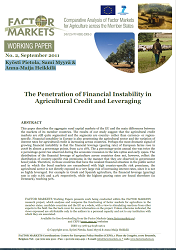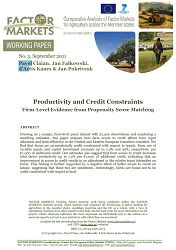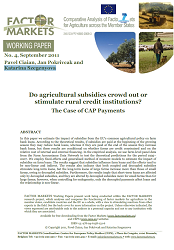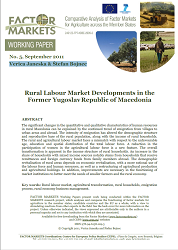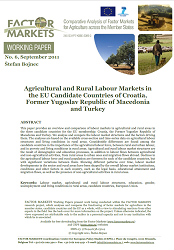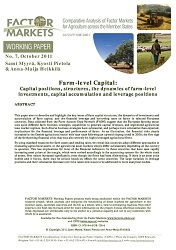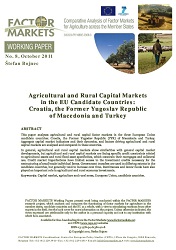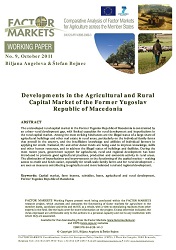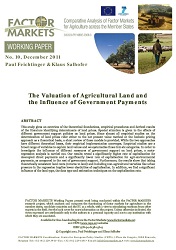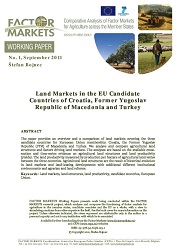
Land Markets in the EU Candidate Countries of Croatia, Former Yugoslav Republic of Macedonia and Turkey
Land Markets in the EU Candidate Countries of Croatia, Former Yugoslav Republic of Macedonia and Turkey
Keywords: Land markets; land structures; land productivity; candidate countries, European Union;
The paper provides an overview and a comparison of land markets covering the three candidate countries for European Union membership: Croatia, the Former Yugoslav Republic (FYR) of Macedonia and Turkey. We analyse and compare agricultural land structures and factors driving land markets. The analyses are based on the available cros-ssection and time-series evidence on agricultural land structures and land productivity (yields). The land productivity measured by production per hectare of agricultural land varies between the three countries. Agricultural land structures are the result of historical evolutionin land markets and land-leasing developments with additional different institutional environments and agrarian and land reforms.
More...
